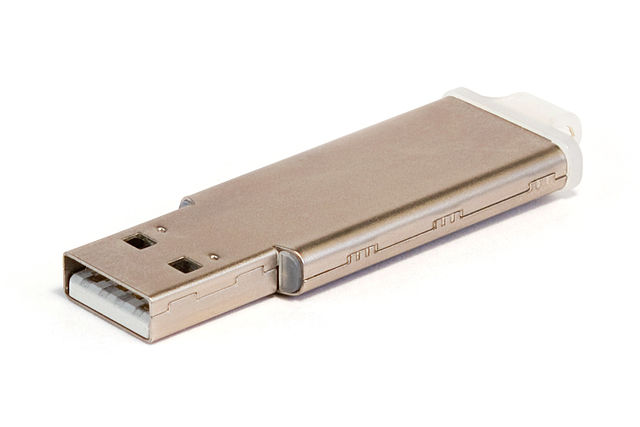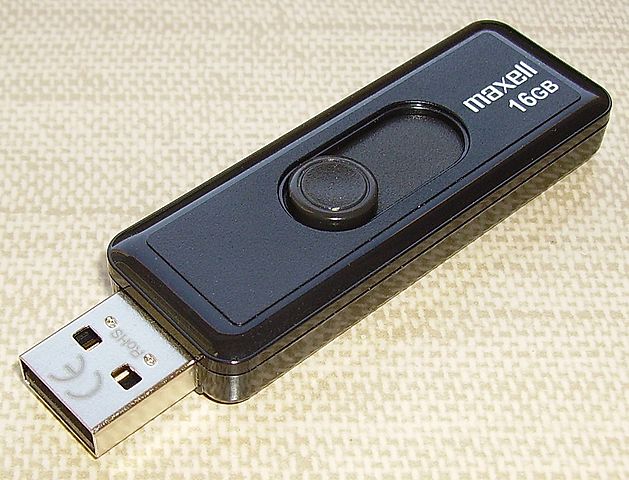Data storage has advanced dramatically over the last six decades – from huge machines with a limited storage capacity to the modern-day tiny memory cards to the USB drives with extensive storage capacities, yet are no bigger than the size of a thumb. USB drives, memory cards, and SSDs are probably the biggest leaps in the evolution of data storage. Technology has evolved, so does the world’s appetite for more storage. Businesses would require efficient storage solutions, which in turn paved way for the more sophisticated ways for storing data. Data storage technology has revolutionized the way we store digital content. Starting from the age-old magnetic tapes to the more efficient USB drives to cloud storage, data storage has come a long way. We’ll discuss the two of the most common data storage technologies out there – flash drives and thumb drives.

What is Thumb Drive?
USB thumb drives, or pen drives, are small, portable data storage devices that use flash memory to store data meaning they can be erases and reprogrammed to be used again to store data. They are small electronic devices, basically with the shape of a human thumb, used to store and transfer electronic data from one computer to another through the USB port. USB is the industry standard plug-and-play interface that allows computers to communicate with other peripheral devices such as mouse, keyboard, printer, etc. Thumb drives use three standard USB specifications 1.0, 2.0, and 3.0 that allow for faster data transfer rates.
What is Flash Drive?

Flash drives are a higher performance option when compared to hard disk drives or compact disks with massive storage capacity ranging from 512GB to 1TB. The modern flash memory drives are accessed much like hard disks in which the controller system has full control over what and how information is stored. Flash drives are smaller, portable solid state drives that can be used as a solid substitute for CDS and HDDs. When plugged into a computer’s USB port, the OS recognizes the device as a removable device. They can be further used to store and backup data from one location to another. They have no moving parts and are strong enough to withstand mechanical shocks and intense pressure.
Difference between Thumb Drive and Flash Drive
-
Meaning of Thumb Drive and Flash Drive
While USB drive is a generic term used to describe a series of storage devices that can be plugged directly into a USB port for your personal computer or laptop. Colloquially, people may refer thumb drive as a flash drive as if they are same storage device. While both serve the same basic purpose – that is to store data or any digital content – they are technically very different. Flash drives, also referred to as compact flash (CF), use flash memory in an enclosed disc to store data, whereas a flash drive is a small solid-state drive (SSD) used as a standard mobile USB storage device that connects to a device through a USB port.
-
Technology involved in Thumb Drive and Flash Drive
Flash drive is a type of storage medium that uses flash memory meaning it’s a non-volatile memory chip that can be electronically erased and reprogrammed before it can be used again. As they have no moving parts, they are more efficient and reliable than the standard USB drives, plus they are smaller and faster. Thumb drives, as the name suggest, are basically USB drives or pen drives that pops into a computer’s USB port. These are portable solid-state drives with the size of a human thumb and are used for storing and retrieving data.
-
Use of Thumb Drive and Flash Drive
Flash drives are small and lightweight, and have thousands of times more storage capacity. Flash memory devices are mainly used in digital cameras, MP3 players, USB flash drives, and solid-state drives. As they are non-volatile, they have fast access time. They are often used to store digital content or information as floppy disks and CDs were once used for. Thumb drives are used for the basic purpose to store files and to copy/transfer files from one computer to another. They are usually available in 16, 32, or 64GB versions with three main USB specifications – USB 1.0, USB 2.0, and USB 3.0 – each allows for faster data transfer rates than its predecessor.
-
Durability of Thumb Drive and Flash Drive
While there is an abundance of thumb drives on the market, only a few are as durable as the more rugged flash drives. They are super small and extremely mobile but they usually come enclosed in plastic or aluminum casings which make them a little vulnerable to shocks and pressure. Flash drives, on the other hand, are extremely durable and are able to withstand mechanical shocks, intense pressure, and accidental falls. Unlike thumb drives, they don’t degrade with age, but rather of their write cycles meaning more you erase and reprogram for reuse, the more the device starts degrading.
Thumb Drive vs. Flash Drive: Comparison Chart

Summary of Thumb Drive verses Flash Drive
Although both thumb drives and flash drives come into the category of data storage devices that are used basically for the same purpose – that is to store and transfer data to and from most computers – they are a little different in terms of storage capacity and technology. Thumb drives are often referred to as USB drives, memory drives, pen drives, jump drives, memory sticks and what not. They use standard USB technology to connect to personal computers using a USB port to save and/or transfer files from one computer to another. Flash drives use non-volatile memory chip to store and transfer mostly digital content from personal computers to digital devices such as digital cameras, MP3 players, laptop computers, mobile phones, and more.
- Difference Between Caucus and Primary - June 18, 2024
- Difference Between PPO and POS - May 30, 2024
- Difference Between RFID and NFC - May 28, 2024


The sentence:
… Flash drives, also referred to as compact flash (CF), use flash memory in an enclosed disc to store data, whereas a flash drive is a small solid-state drive (SSD) used as a standard mobile USB storage device that connects to a device through a USB port….
looks rather useless in explaining the difference.
Reply